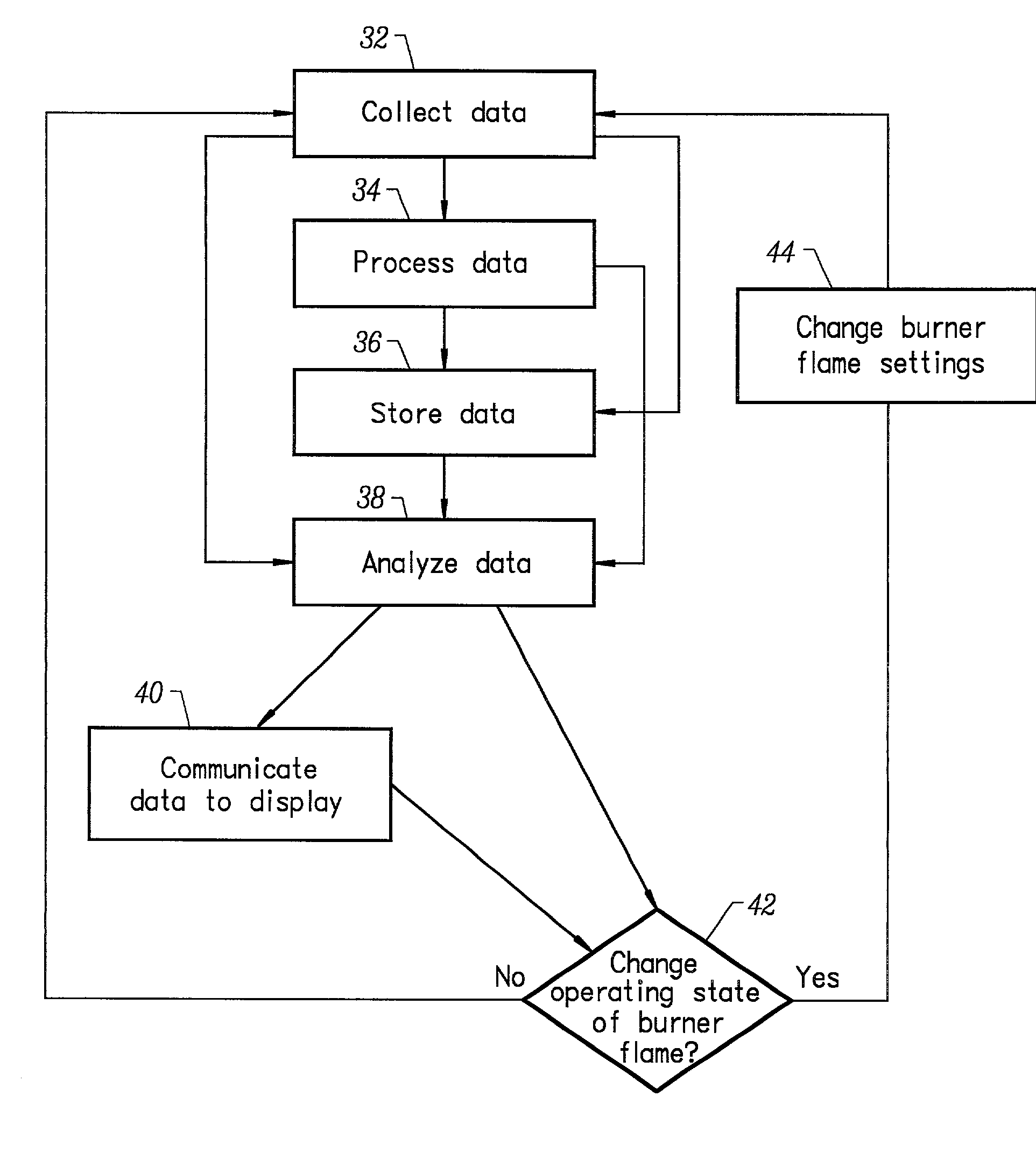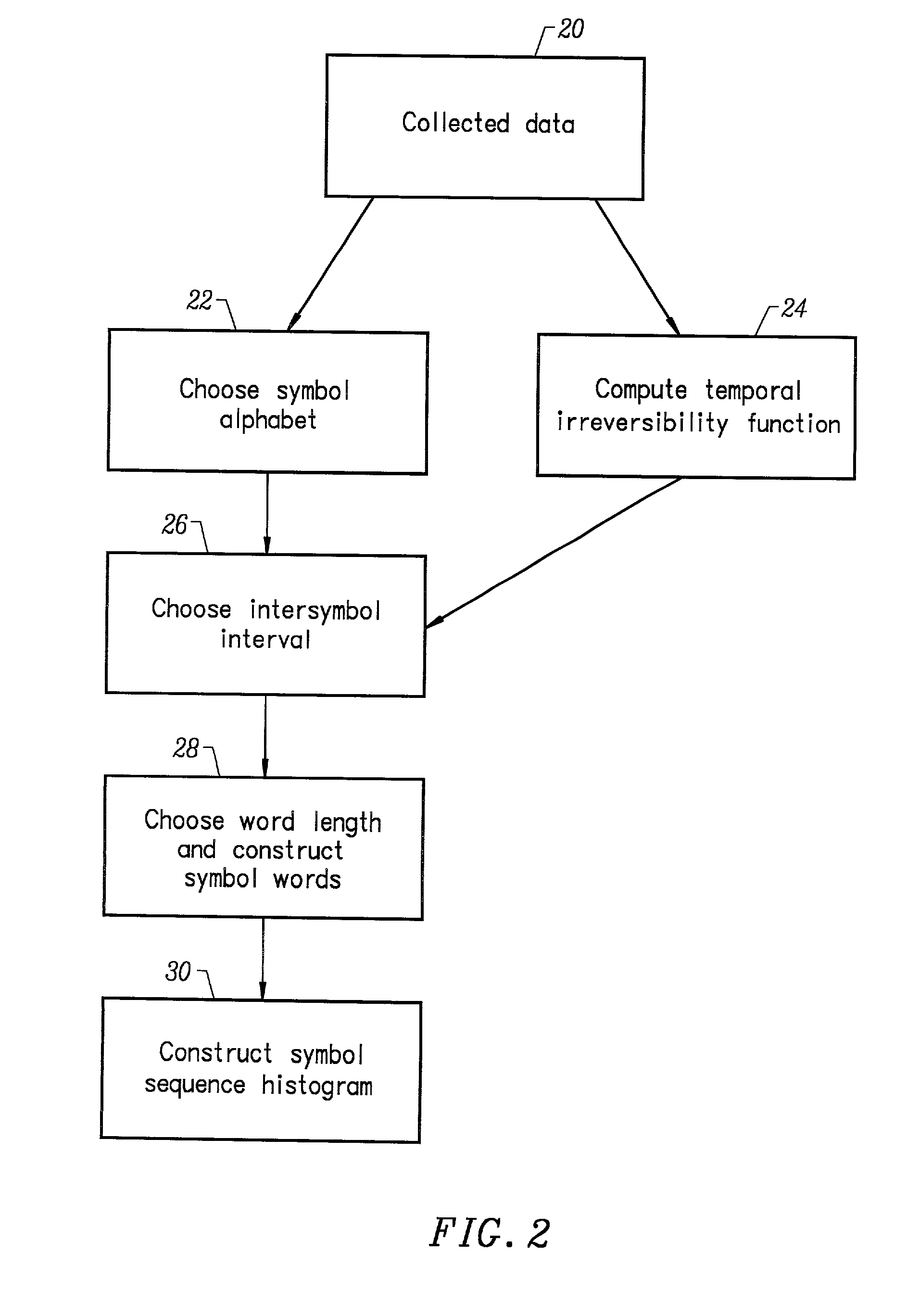Application of symbol sequence analysis and temporal irreversibility to monitoring and controlling boiler flames
a technology of symbol sequence and temporal irreversibility, applied in the direction of evaporator regulation/control, separation process, instruments, etc., can solve the problems of large no.sub.x and carbon burnout fluctuations in individual burners, inefficient boiler control, and large amount of fuel heating valu
- Summary
- Abstract
- Description
- Claims
- Application Information
AI Technical Summary
Benefits of technology
Problems solved by technology
Method used
Image
Examples
Embodiment Construction
[0094] The following example is offered solely for the purpose of illustrating features of the present invention and is not intended to limit the scope of the present invention in any way.
[0095] Data was acquired at McDermott Technology Incorporated's (Alliance, Ohio) Clean Environment Development Facility ("CEDF") in Alliance, Ohio. The CEDF is designed to test a single 100-Mbtu (30-MW.sub.t) burner at near commercial scale. Flow patterns, temperatures, residence times and geometry are representative of a middle row burner in a commercial utility boiler. All measurements were made using one of two eastern bitiminous coals.
[0096] FIG. 5 illustrates an overall profile view of the CEDF. A side view of the CEDF is illustrated in 50. Here, 52 is a burner, while 54 is the furnace exit. Sight and access ports are located for example at 56. A front view of the CEDF is illustrated in 58. FIG. 6 shows a schematic view of the CEDF that illustrates the approximate location of optical, acoustic...
PUM
 Login to View More
Login to View More Abstract
Description
Claims
Application Information
 Login to View More
Login to View More - R&D
- Intellectual Property
- Life Sciences
- Materials
- Tech Scout
- Unparalleled Data Quality
- Higher Quality Content
- 60% Fewer Hallucinations
Browse by: Latest US Patents, China's latest patents, Technical Efficacy Thesaurus, Application Domain, Technology Topic, Popular Technical Reports.
© 2025 PatSnap. All rights reserved.Legal|Privacy policy|Modern Slavery Act Transparency Statement|Sitemap|About US| Contact US: help@patsnap.com



